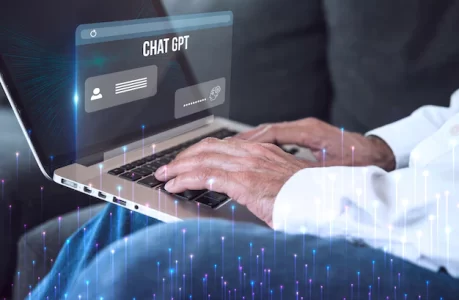Data Protection For Small Businesses: Best Practices

Data is a valuable asset for any business. It helps you know your customers, the amount of money in receivables, your vendors, the orders you have taken, and more. Many small businesses, however, find it overwhelming to manage or deal with the growing data.
Imagine waking up one day to find all this information just disappeared. Data breaches are common for many small businesses, leading to identity theft and other fraudulent activities for their customers. That could end up in civil cases with huge and damaging judgments. Businesses must invest in technologies and maintain compliance with the law to improve data security. This article discusses the ways to help small businesses protect their data.
Identify And Classify Sensitive Data
Small businesses collect data of various types, including customer information, employee records, and payment details. You can protect data effectively by knowing the type of data you have.
Data discovery technology will scan data repositories and provide results. You can arrange the data into categories by using a data classification process.
Data identification and classification will help control user access to sensitive data and prevent storing it in unsafe locations. It minimizes the risks of data loss and improper data exposure.
Then, you should label sensitive data with a digital signature to show its classification. You can update data while creating, modifying, storing, and transmitting. Controls should be in place, preventing users from manipulating the classification level.
Many people will try to falsify the classification level. This can be a hacker managing to infiltrate your network system or a legitimate employee accessing data they are not entitled to.
Create A Data Protection Policy
Forty-three percent of cyber attacks are on small businesses. This is a sobering statistic. Therefore, data classification policy alone is not enough. Create a data protection policy that has specific conditions. It should outline handling procedures, personnel who can access data, conditions for data access, etc.
The data protection policy should be clear and detailed to ensure your employees understand your expectations. These policies should include corrective actions that employees can follow once they experience security threats. Remember, employees must be aware of this policy.
You can stop data breaches by using data monitoring and reporting tools. Data monitoring will test and prove your data protection policies, ensuring they are effective. It will help your business adapt to changing data threats.
Alongside data monitoring, a system can send data reports highlighting potential threats to your data. Monitoring and reporting tools allow businesses to identify data breaches early to minimize their impact.
Secure Your Network
Investing in a good network will protect your data from cyber threats. Cybercriminals use your business’ Wi-Fi as an entry point to your data. The following steps will help you secure your business network:
- Install a firewall: A firewall will prevent cyber attacks by protecting your network from malicious traffic. It can deter or stop a hacker from choosing your network.
- Encrypt sensitive data: Encryption changes data into unreadable codes. Even if the hackers steal your data, it will be useless as they cannot decrypt and decipher it.
- Update software: Vendors update their software regularly to add or strengthen security patches to prevent security breaches. The software that keeps your business running should be up-to-date.
- Provide service set identifier (SSID): Only the correct password will allow users to connect to your business Wi-Fi network, preventing unauthorized access to sensitive data. In addition, providing different access levels to various data classification levels enhances security.
Data Backups
Does your business backup its files? A security threat will compromise or delete your business data. Not only a cyber attack, but a server failure can also lead to data loss.
A backup automatically copies your data files to storage, and you can restore the files from your backups after resolving the cyberattack. A backup program should allow you to automate or schedule the backup process.
Storing copies of backup files offline will prevent them from becoming accessible or encrypted, especially if the system experiences a cyber attack. Testing the backup and recovery systems ensures they are still effective.
Employee Training
Employees are another source of cyber attacks. They may carelessly or deliberately give hackers access to your networks, leading to data breaches.
Employee-initiated attacks can come in various forms. An employee, for example, may lose a work laptop or disclose login details. Sometimes, a staff member can mistakenly open infected emails, letting viruses attack the business’ network.
Investing in employee training can protect against threats from within your business. Data protection best practices will raise awareness about data protection. For instance, teach employees about using strong passwords and how they can identify phishing emails.
The staff should understand the benefits of data security and how to handle potential threats. Updating them on trending security threats and new protection measures will improve your data protection initiatives.
Prevent Physical Theft
Hackers can breach your network, but you should also be wary of losing your hardware. Do not allow unauthorized people to use your business PCs, laptops, and other business devices. And leaving an unattended laptop may tempt bad people to steal it.
Other PCs and laptops precaution measures include adding a physical tracker and securing the device. If several employees use the same devices, create separate user profiles and accounts.
Employees can keep sensitive information on their business mobile devices, creating security challenges. Ask your staff to encrypt data and password-protect their mobile devices.
Setting up remote wiping gives you additional protection. It allows you to delete data on a stolen or lost business device. There should be reporting procedures for any stolen or lost business devices.
Supply Chain Data Protection Concerns
Suppliers may have access to your systems. Conducting a supply chain risk assessment will help you know the threats exposed to your business. Determine how data is stored, check third-party access rights to your data, assess suppliers’ cybersecurity weaknesses, and more.
Create a security program that outlines the policies, tools, and procedures you will use to manage your suppliers’ security risks. The program should include conducting regular data backups. Communicating your security program with your suppliers helps to identify and monitor security risks.
Evaluate your suppliers with access to your business data. What data are suppliers accessing, and why? If it is a new supplier, you can get more information about them on PhoneHistory to ensure they are legit. Verifying users’ identities and the devices used to access data will protect your business data.
You should then minimize your suppliers’ access to sensitive data, depending on the data they need to perform their job effectively.
Conclusion
Hackers always look to compromise data security for businesses. A data breach can do lots of harm. It can destroy the reputation of a business, which causes a drop in revenues due to disgruntled customers. Fines for failing to comply with regulations will affect the cash flow of small businesses.
This is why small businesses should have appropriate systems to protect their data. Data protection involves implementing several techniques. Identifying and classifying sensitive data, creating a data protection policy, securing your network, conducting data backups, and more are all critical to data protection.
Read Also:



























Leave A Reply